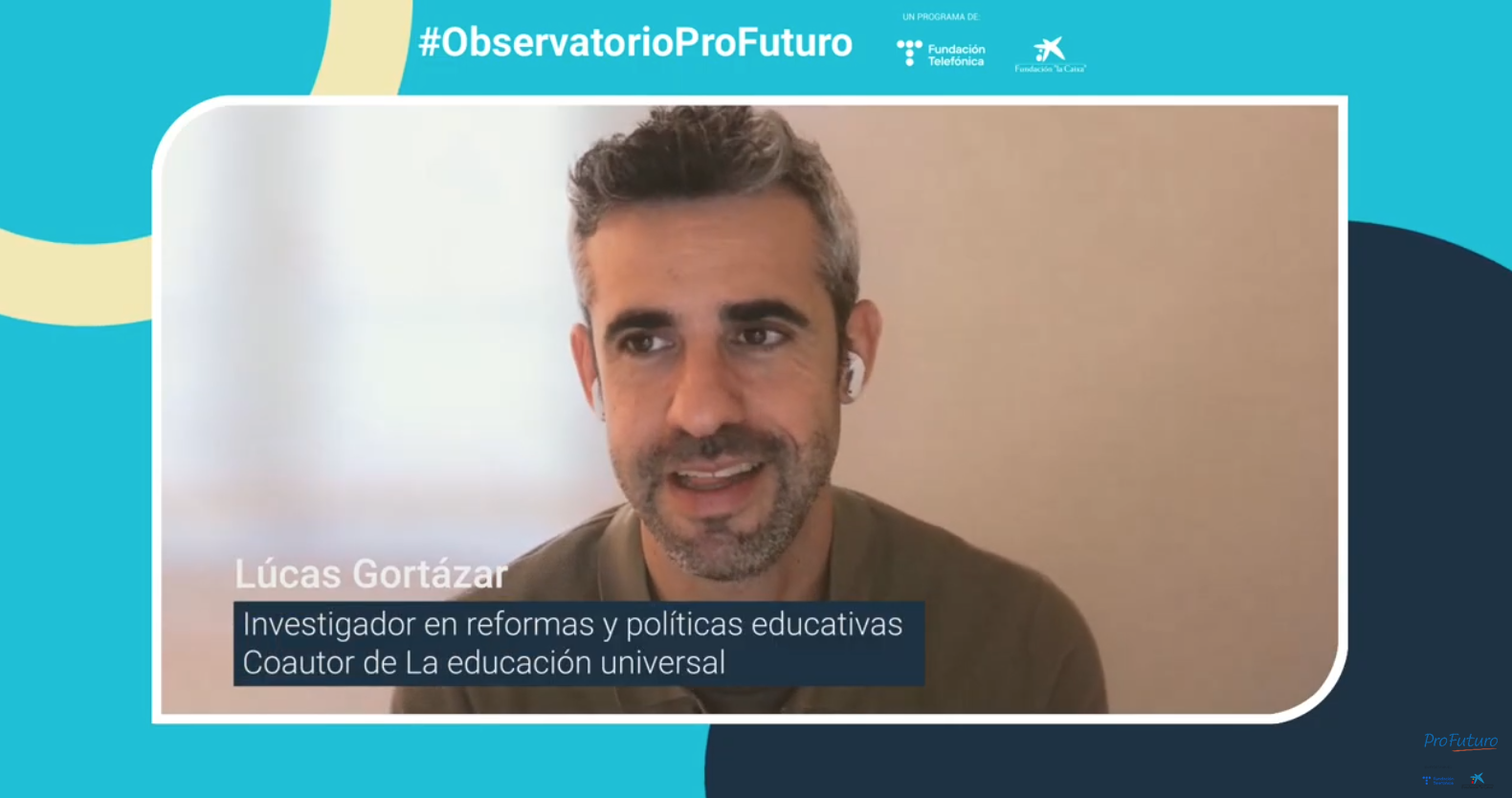
Despite advances in research and evaluation in recent years, many educational decisions are still made without clear support from data and evidence. Governments, school authorities, and policymakers face political pressures, shifting agendas or simply a lack of accessible and reliable information. The result: ineffective programmes, poorly allocated resources, and persistent gaps—especially in the most vulnerable contexts.
Open data—public, reusable information with an open licence—allows diverse stakeholders (from researchers and teachers to civil society organisations and families) to analyse the educational landscape, evaluate policies, and propose evidence-based solutions. When properly managed, this data enables the design of fairer, more effective, and more contextualised policies.
For these reasons, many global initiatives—such as those from the World Bank, UNESCO, and the IDB—promote the use of open data in education. At the institutional level, cases such as the IFE Data Hub at Tecnológico de Monterrey show how these resources can represent a significant step forward in decision-making.
This article explores what open educational data is, why it is important for public policy, how it has been successfully used, the challenges it faces, and the best practices to maximise its impact.
What Is Open Data in Education?
Let’s begin by defining the concept. When we speak of open data, we refer to the proactive publication—without economic barriers or restrictive licences—of primary records produced by educational administrations: enrolments, assessment results, budget allocations, teaching staff provisions. These datasets must be offered in standardised, machine-readable formats and accompanied by complete metadata. Only then can they become public goods capable of supporting rigorous diagnostics, verifiable hypotheses, and evidence-based policies.
Publishing open data is not just about uploading files to a website. The international consensus—gathered by the Open Knowledge Foundation and endorsed by UNESCO, the IDB, and the OECD—requires four minimum conditions:
- Technical accessibility: The dataset must be available in a machine-readable format (e.g., CSV or JSON) so that any researcher or developer can begin working immediately without laborious conversions.
- Clear and permissive licensing: The dataset must explicitly state that it can be copied, mixed, and shared, provided the source is cited. Licences like Creative Commons CC BY or ODC BY are most common.
- Regular updates: Data loses value as it ages. A 2018 dashboard is useful for historical analysis but not for planning the next school cycle. Best practice recommends publishing each new dataset as soon as it is validated.
- Sufficient documentation: Variables, units of measurement, sampling methods, and anonymisation processes must be described in metadata readable by both humans and machines.
Meeting these requirements turns the dataset into a public good that any stakeholder—teacher, journalist, student or family—can examine. The impact goes beyond transparency. When a government publishes, for instance, monthly dropout rates disaggregated by gender, geographic area, and socioeconomic status, it opens the door to external research that can confirm or challenge current policies. If it also provides the code used to calculate results, the academic community gains a solid and comparable baseline.
In education, datasets may contain enrolment variables, assessment results, socioeconomic information, school infrastructure, or budget allocations. The greater the granularity (e.g., school-level rather than district-level), the more precisely inequalities can be detected. Such granularity requires protection mechanisms: removal of direct identifiers, minimum groupings, and, at times, statistical noise to prevent re-identification of individual students.
Now that the concept is clear, we’ll look at how different regions have applied these principles and what outcomes they have achieved.
From Intuition to Evidence
Cold numbers often gain relevance when connected to specific contexts. Below, we list the benefits of open data use and illustrate them with experiences from various countries.
Transparency and accountability
As noted, one of the most visible benefits is transparency and accountability. By publishing information on academic outcomes, allocated resources, educational programmes or school attendance, governments enable the public to monitor the functioning of the education system. Initiatives such as Uruguay’s open education data portal or Mexico’s open education data site show how this practice strengthens public trust and encourages civic participation in educational improvement.
Tangible impacts on educational outcomes
Effective use of open data has shown real impacts on improving educational outcomes. For example, countries such as Finland and Estonia have used open data to identify areas for improvement, tailor educational interventions, and promote equity. In Finland, open data has fostered collaboration between universities and the tech sector, leading to the development of educational platforms like Opin.fi, which centralises national higher education offerings and promotes equitable access and digital innovation. In Estonia, the digital education system has integrated open data with school management platforms to detect early warning signs of school dropout.
Fairer and more efficient resource allocation
In Latin America, the Inter-American Development Bank (IDB) has documented how open data analysis and Educational Management Information Systems (EMIS) enable fairer and more efficient allocation of educational resources. Instead of distributing funds uniformly, systems can accurately identify schools most in need, considering factors like socioeconomic status, infrastructure, or learning outcomes. In Pernambuco, Brazil, for instance, SIGED revealed that resources were disproportionately allocated to more privileged schools. This evidence led to adjustments that favoured more vulnerable communities.
Genuine transformation
The IFE Data Hub at Tecnológico de Monterrey exemplifies how open data can transform education at an institutional level. The platform has facilitated research into student competencies, helping redesign academic programmes based on real, updated data. Shared information has uncovered patterns in academic performance, employability skills, and digital divides among student groups.
Educational Gaps: Inequality Exposed by Data
One of the most significant contributions of open educational data is its ability to reveal inequalities hidden in aggregated statistics. By enabling disaggregated analysis by region, gender, socioeconomic status, ethnicity, or disability, open data exposes persistent patterns of educational exclusion that demand urgent responses.
A more equitable educational future requires evidence to be at the heart of the conversation.
Effective Strategies Derived from Open Data Analysis
Opening data is not an end in itself: its value multiplies when it informs concrete strategies that improve learning and reduce inequality. Various countries and institutions have developed policies and programmes based on open data analysis that have yielded measurable results.
One of the most powerful applications is early warning systems to identify students at risk of dropping out. These systems use data such as attendance, academic performance, and socioeconomic variables to trigger preventive interventions. In Uruguay, Plan Ceibal developed the GURI Familia system and other monitoring tools that allow schools to act proactively, improving student retention in vulnerable contexts.
Another successful strategy is the use of data to target scholarships and educational support. In Chile, the Ministry of Education uses the General Student Information System (SIGE) to identify priority students based on income, performance, and location. This data ensures that benefits are distributed more equitably, reaching those who need them most.
In higher education, the IFE Data Hub at Tecnológico de Monterrey stands out as an institutional reference for how open data can guide innovative educational policy. Through its platform, it has analysed the development of disciplinary and transversal competencies among Tec21 Model students, using artificial intelligence and data visualisation to generate feedback and redesign curricula. These studies, supported by scientific publications, have identified key factors such as gender, prior performance, and technology access in acquiring digital and sustainability skills.
Additionally, organisations like J-PAL have evaluated data-informed policies in various countries. For instance, in Pakistan, a J-PAL study showed that providing comparative school performance reports to parents and schools significantly improved academic results, reduced private school costs, and increased enrolment rates.
In Colombia, the SIGCE system has been crucial in targeting interventions from the Single School Day programme, prioritising schools with the greatest infrastructure deficits and lowest performance.
These strategies share a common trait: they turn information into action. By identifying needs, evaluating policies, and allocating resources based on evidence, open data becomes a driver of educational innovation.
Barriers and Dilemmas of Open Data
Recognising achievements doesn’t mean ignoring challenges. The Open Data Institute reviewed 140 educational portals and found that only 45% remained active four years after launch; the main reason was lack of recurring funding. Maintaining servers, validating new datasets, and ensuring cybersecurity requires stable resources.
Interoperability poses another challenge. The FAIR principles guide ministries, but implementation requires agreed metadata, classifications, and formats. A CSV file without a glossary is a wall. If each region labels columns differently, national comparisons become impossible.
Privacy is a critical concern. In 2023, the Spanish Data Protection Agency issued specific education guidelines: mask direct identifiers, group records for small samples, and, in extreme cases, introduce statistical noise. Balancing transparency and confidentiality is a legal and technical balancing act.
There’s also a cultural dimension. Nothing guarantees a school leader will welcome the publication of results if they fear being judged without support. Several countries have eased this resistance by pairing indicator dissemination with improvement programmes and extra funding.
Finally, data literacy completes the triangle. A dataset won’t change teaching practice if educators lack the time and training to interpret it. The IDB recommends incorporating analytical skills into ongoing professional development: reading tables, forming hypotheses, designing interventions.
Towards Open, Evidence-Based Education
A more equitable educational future requires evidence to be at the heart of the conversation. Static PDFs are not enough; nor is an interactive dashboard without updates. Political will, sustained funding, and a society that asks “What data supports your decision?” are essential. Openness doesn’t guarantee certainty—it offers the chance to make fewer mistakes and correct them more quickly.
If that chance becomes reality, we’ll have moved towards a system where every decision—from buying a book to building a classroom—is backed by evidence visible to all.






